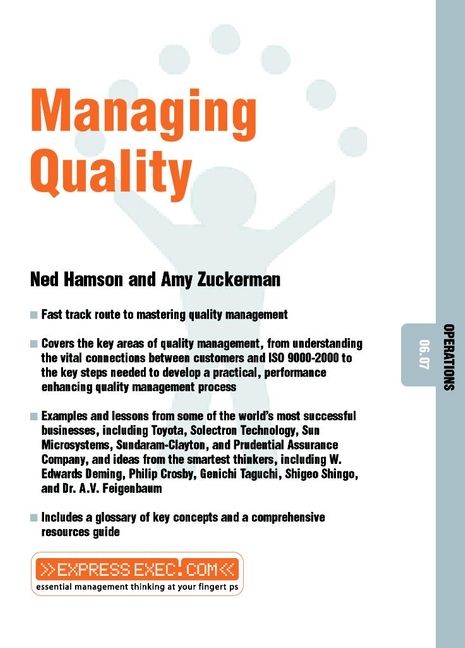Physical Address
304 North Cardinal St.
Dorchester Center, MA 02124
Physical Address
304 North Cardinal St.
Dorchester Center, MA 02124

In today’s fast-paced business environment, maintaining high standards is paramount for success. Organizations that prioritize quality management are better positioned to meet customer needs, ensure compliance, and promote operational excellence. This article delves deep into the multifaceted dimension of managing quality, examining its principles, methodologies, and the significant impact it can have on an organization’s bottom line.
Managing quality is not merely a compliance obligation, but a strategic imperative that can foster competitive advantage. At its core, quality management encompasses various processes that organizations employ to maintain and enhance their products and services. This comprehensive approach helps not only in meeting and exceeding customer expectations but also in streamlining internal operations by minimizing errors and inefficiencies.
To effectively manage quality, organizations must focus on several key elements:
Implementing effective practices in managing quality requires a culture of continuous improvement and engagement across all levels of the organization. Here are some successful strategies:
A quality management system (QMS) provides a structured framework for managing quality across an organization. Systems such as ISO 9001 help organizations develop consistent processes and meet customer requirements efficiently. The integration of QMS within organizational frameworks promotes accountability, transparency, and continual improvement in managing quality.
Investing in employee training is crucial for enhancing quality management processes. Employees who are knowledgeable about quality standards and practices contribute significantly to achieving quality objectives. Encouraging team involvement in quality initiatives not only elevates the commitment to quality but also fosters an environment where innovation and problem-solving can thrive.

This image represents a significant resource for understanding the principles and practices involved in managing quality. Studying such materials can enhance both theoretical knowledge and practical application within organizations.
Utilizing data analytics in managing quality allows organizations to make informed decisions based on actual performance metrics rather than gut feelings. Data-driven insights can reveal patterns, identify areas for improvement, and measure progress over time, leading to smarter quality management practices.
Creating a culture of quality starts at the leadership level. Leaders must communicate the importance of quality management and demonstrate their commitment through actions. Encouraging open communication about quality issues and rewarding quality achievements can help develop a culture that values quality at every level.
Technological advancements have transformed the landscape of quality management. From automated quality control systems to sophisticated data analytics software, technology plays a pivotal role in enhancing quality processes. The integration of tools such as Six Sigma and Lean methodologies facilitated by technology can lead to significant improvements in quality and efficiency.
Despite the clear benefits of managing quality, organizations often face challenges that can hinder their quality initiatives. Common challenges include:
Addressing these challenges requires strategic planning, clear communication, and a commitment to fostering a culture of quality among all employees.
Organizations must establish key performance indicators (KPIs) to evaluate the success of their quality management efforts. Effective KPIs include customer satisfaction metrics, defect rates, and process efficiency indicators. Regularly analyzing these metrics provides insight into areas requiring attention and informs the ongoing quality improvement strategy.
Continuous improvement is a core principle in managing quality. Organizations should embrace methodologies such as Kaizen, which promote ongoing, incremental improvements in processes. Regularly soliciting feedback from employees and customers alike can uncover insights that drive continual enhancement in quality management practices.
In conclusion, managing quality is a vital aspect that can significantly influence an organization’s success. By adopting effective practices, fostering a culture of quality, embracing technology, and implementing continuous improvement initiatives, businesses can enhance their ability to meet and exceed quality standards. Investing time and resources into mastering the principles of quality management not only benefits the organization but also leads to superior outcomes for customers, ultimately positioning the organization favorably in the competitive marketplace.